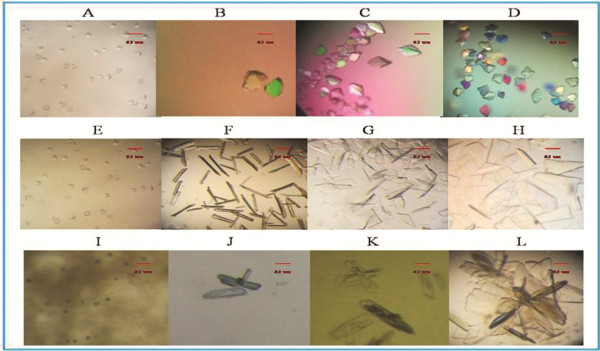Figure 4.

Crystallization of WT-TMV-CP32 (Cleaved GST-tags) and WT-His-TMV-CP12, the scale bar represents 0.1 mm. (A) and (E) Typical octahedral WT-His-TMV-CP12 crystals grown in the crystallization room at 295 K. The crystals did not grow bigger regardless of the time of exposure in the crystallization reagent. (B), (C), and (D) Screening and optimization of WT-His-TMV-CP12 crystallization. Although the size of the crystals improved, the quality of the crystals did not. Conversely, most of the improved crystals have no diffraction. (F), (G), and (H) Optimization of crystallization reagents facilitated growth of WT-His-TMV-CP12 crystals. Results showed that increased salt and ionic strength increased by the crystallization reagent changed the crystallization from octahedral crystals to bar and lamellar crystals. (I) WT-TMV-CP32 microcrystal that was cloned using the vector of PGEX-6P-1, purified using His-tags, cleaved GST-tags by PreScission Protease. In addition, seeding tools were used and crystallization reagents were changed, including the crystallization reagents of Hampton research, in an attempt to improve the quality and size of the crystals or to produce a different crystal form. Only twin crystals or polycrystalline were obtained, as shown in (J), (K), and (L).
